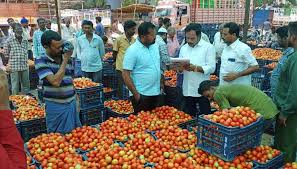
Tomato Prices Drop: After months of strain on household budgets due to high tomato prices, consumers are finally seeing relief. The Department of Consumer Affairs has reported a decline in tomato prices, citing improved supply as the key factor behind this change. Over the past month, tomato prices have dropped by more than 22%, and further reductions are anticipated.
The recent spike in vegetable prices has driven food inflation to a 14-month high as of October 2024. However, the reduction in tomato prices could offer much-needed relief to consumers affected by high grocery bills.
According to the Department of Consumer Affairs, tomato prices have fallen notably in retail markets. On November 14, 2024, the average retail price of tomatoes across India stood at Rs 52.35 per kg, down from Rs 67.50 per kg on October 14, 2024. This reduction equates to a 22.4% price drop, saving consumers about Rs 15 per kg within just one month.
Wholesale markets have witnessed an even steeper decline in tomato prices. In Azadpur Mandi, one of India’s largest agricultural markets, wholesale tomato prices fell by nearly 50%—from Rs 5,883 per quintal on October 14 to Rs 2,969 per quintal on November 14. Other major markets, such as Pimpalgaon, Madanapalle, and Kolar, have also reported substantial declines in tomato prices due to increased supply and steady arrivals.
While overall tomato production has increased, weather variations have impacted the crop yield and contributed to recent price instability. According to the Department of Agriculture’s preliminary estimates, total tomato production for 2023-24 is projected at 213.20 lakh tonnes, up 4% from 204.25 lakh tonnes in 2022-23. However, adverse weather conditions, especially in key tomato-producing states, caused fluctuations in supply.
Unusually heavy rainfall in Andhra Pradesh and Karnataka affected tomato crops, leading to a price spike in October 2024. These two states are significant contributors to India’s tomato supply, and disruptions in their crop yields due to weather conditions have been a notable factor in price volatility.
Tomato sowing typically peaks in October and November in major production states. The arrival of the new crop during these months typically stabilizes prices. Due to the short tomato cultivation cycle, farmers can often harvest multiple crops within a single season, ensuring a relatively steady supply.
Although tomato arrivals have temporarily reduced in key hubs like Madanapalle and Kolar, fresh supplies from states such as Maharashtra, Madhya Pradesh, and Gujarat have kept prices stable. This influx of new produce is expected to maintain price stability in the coming weeks, easing the financial burden on households.







